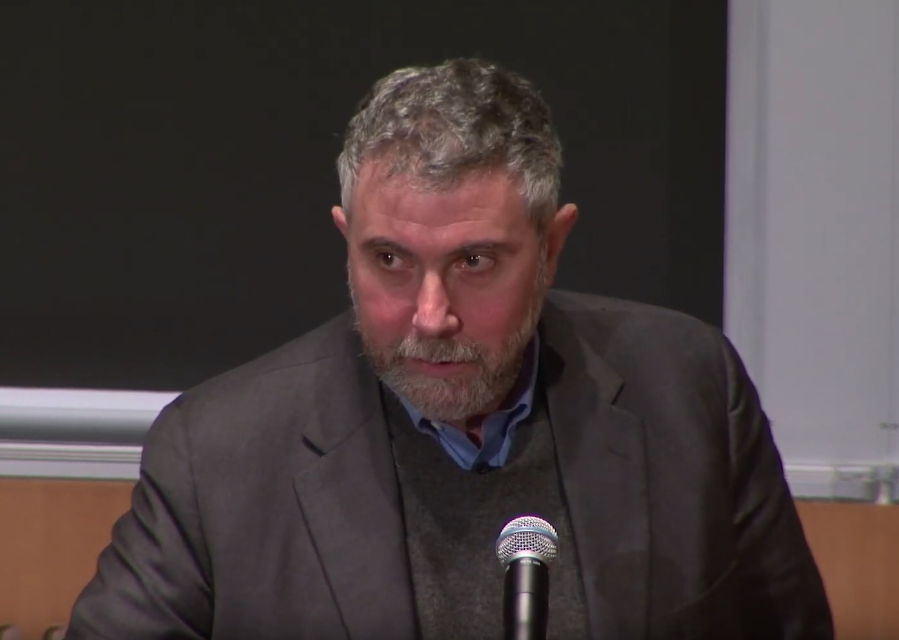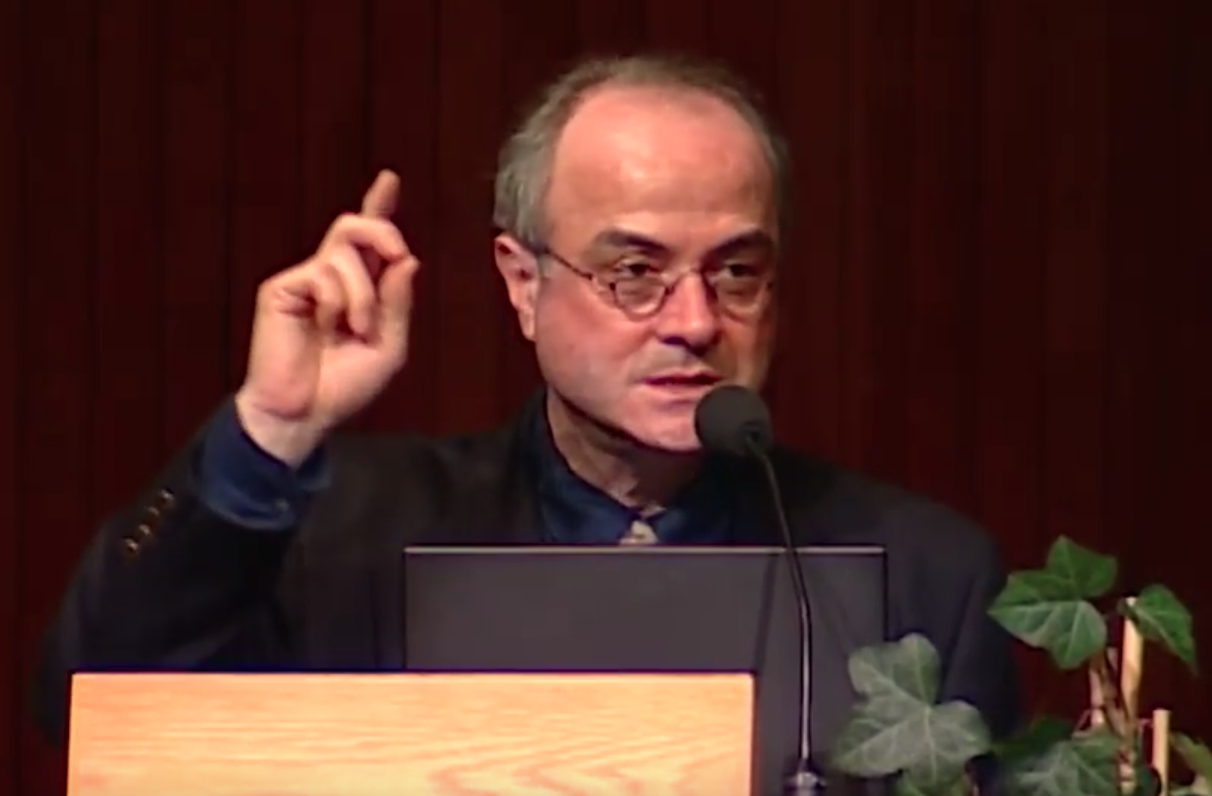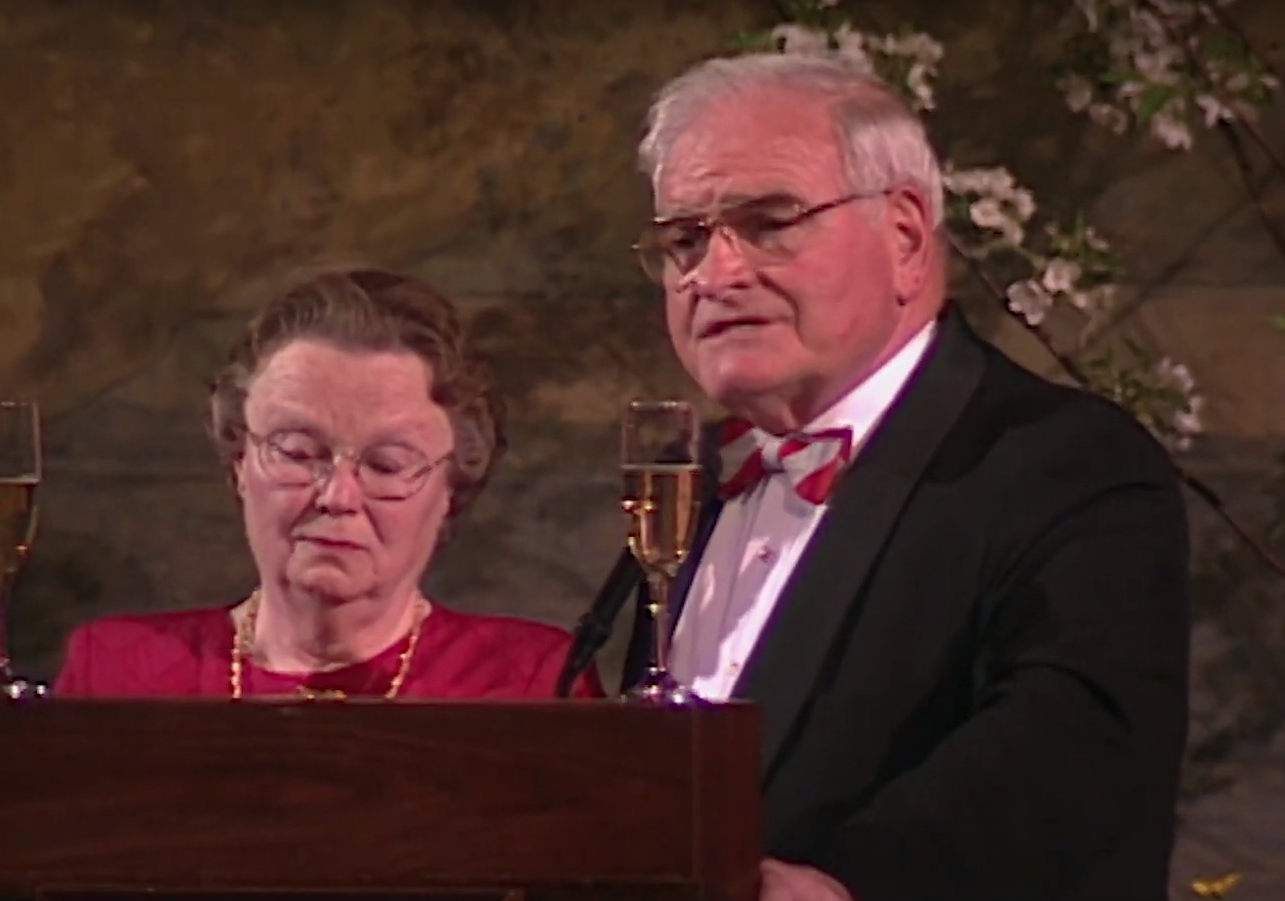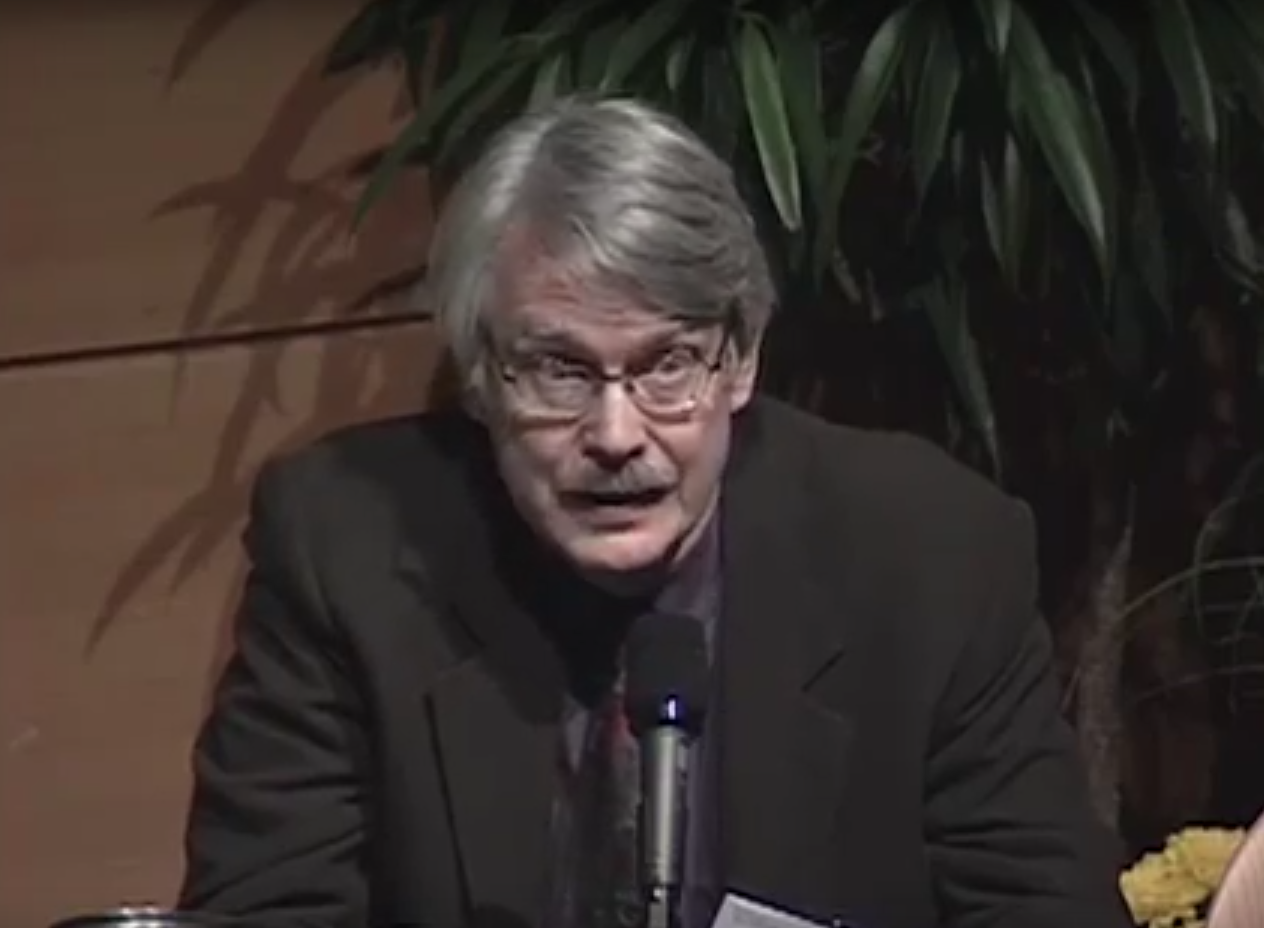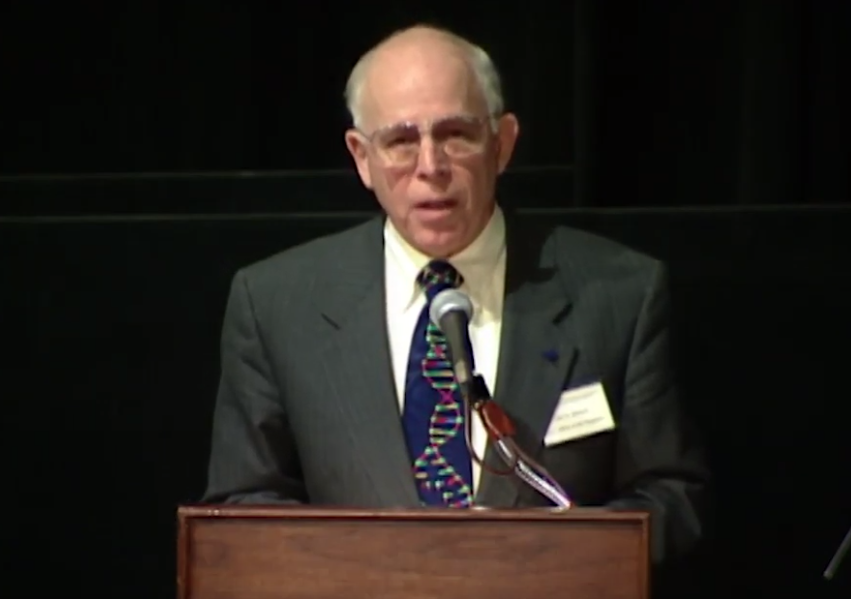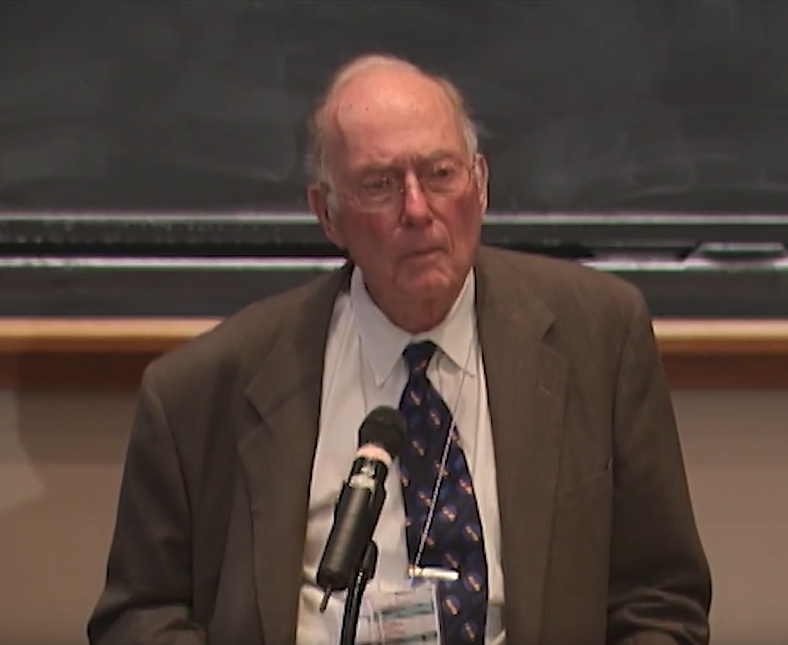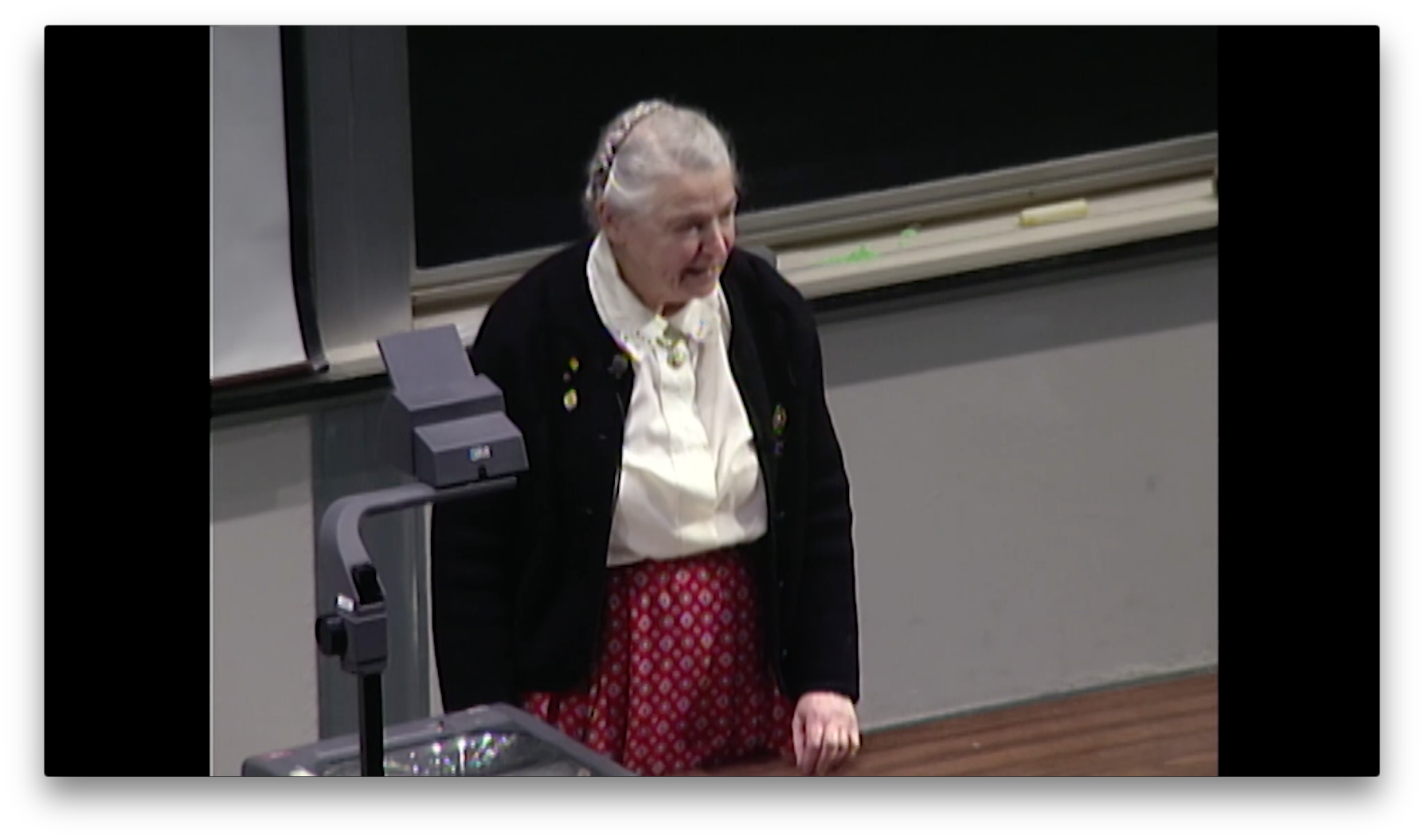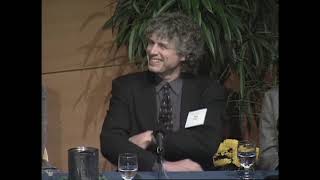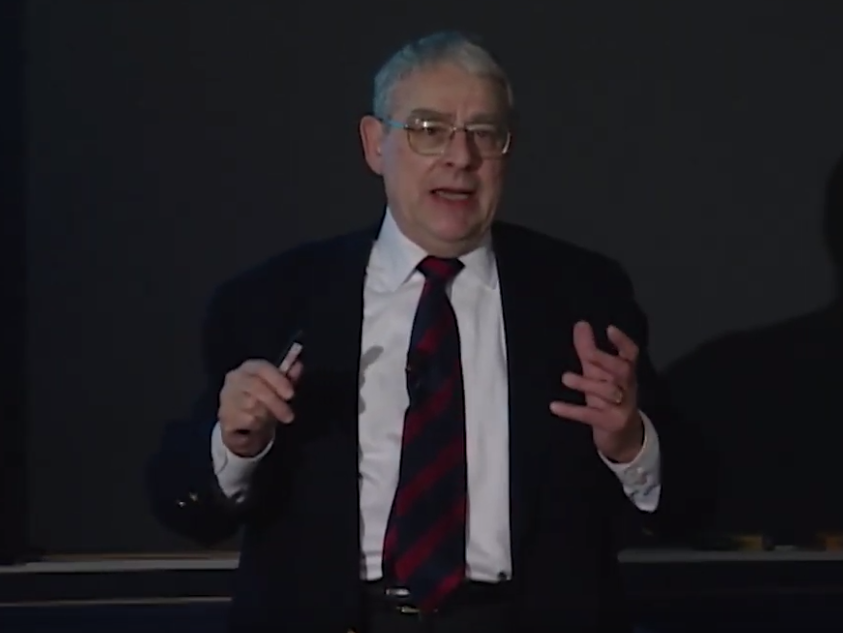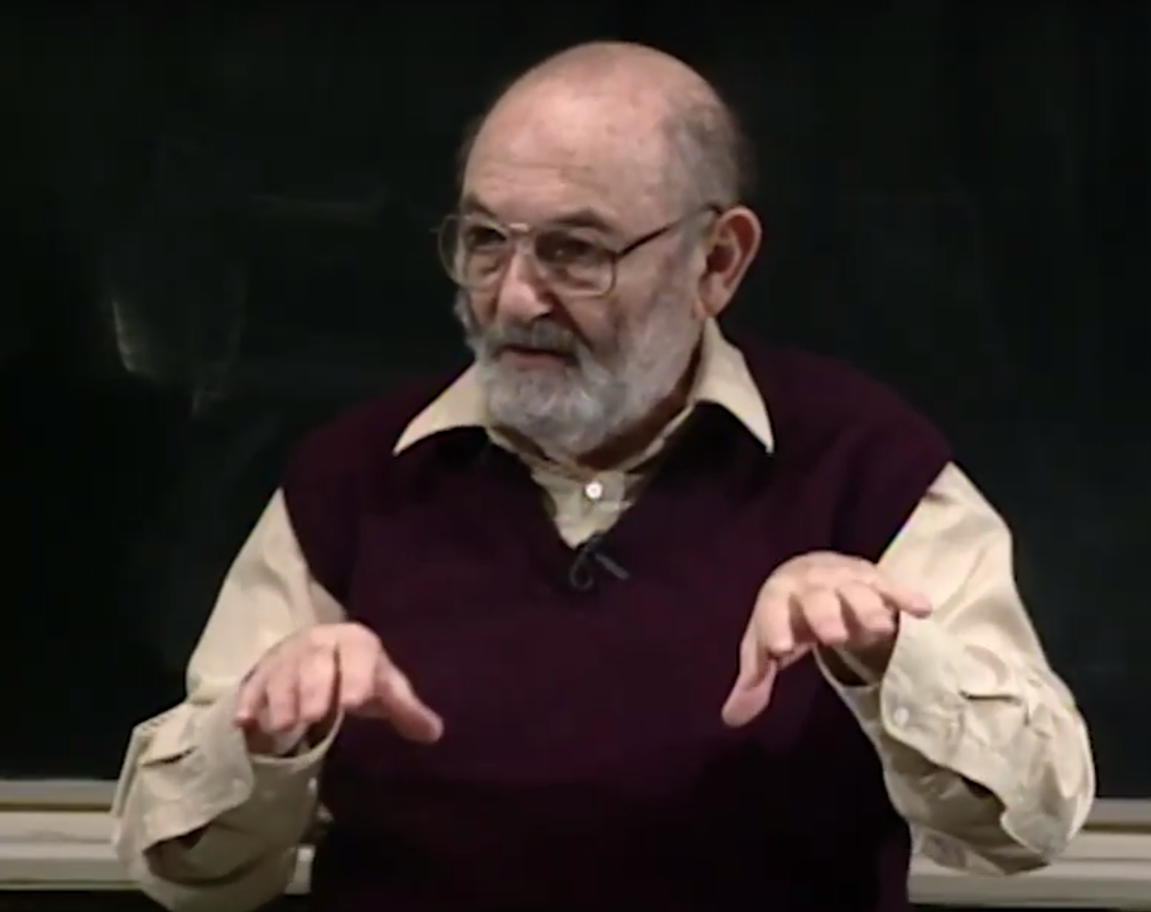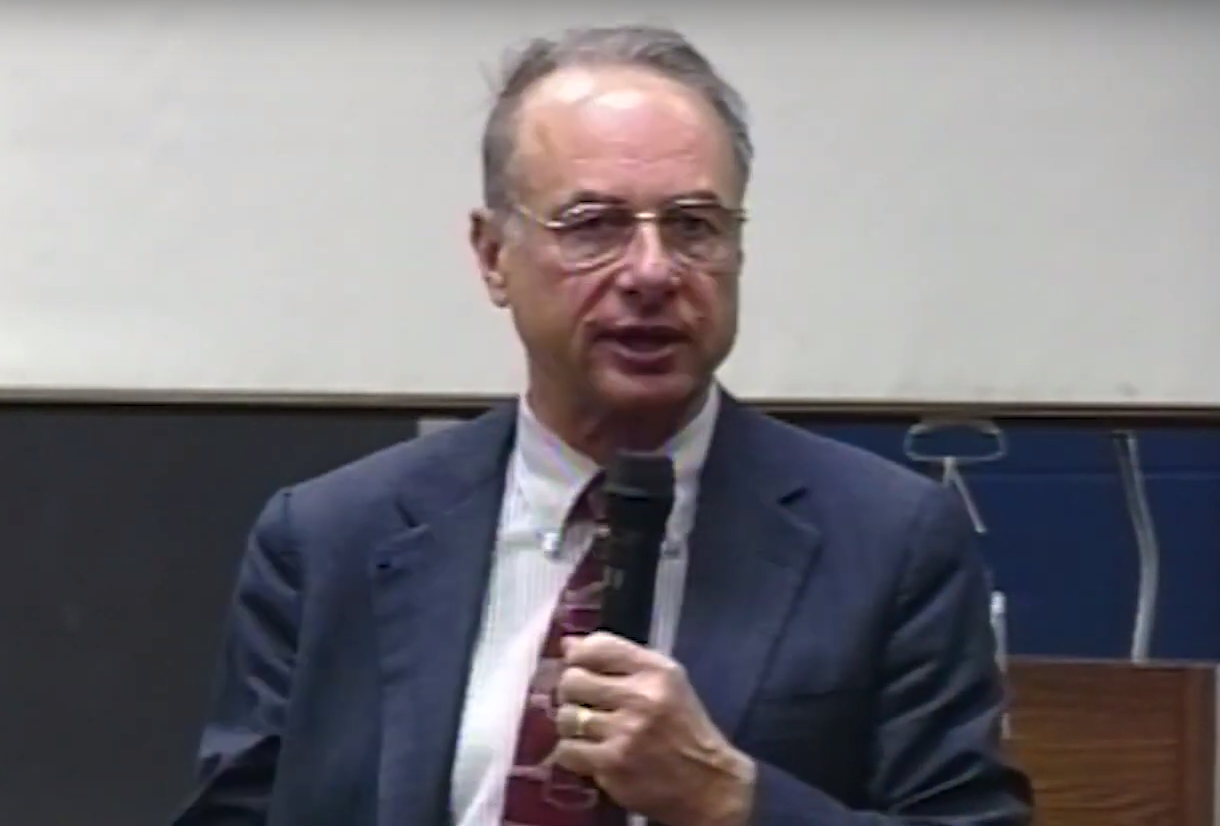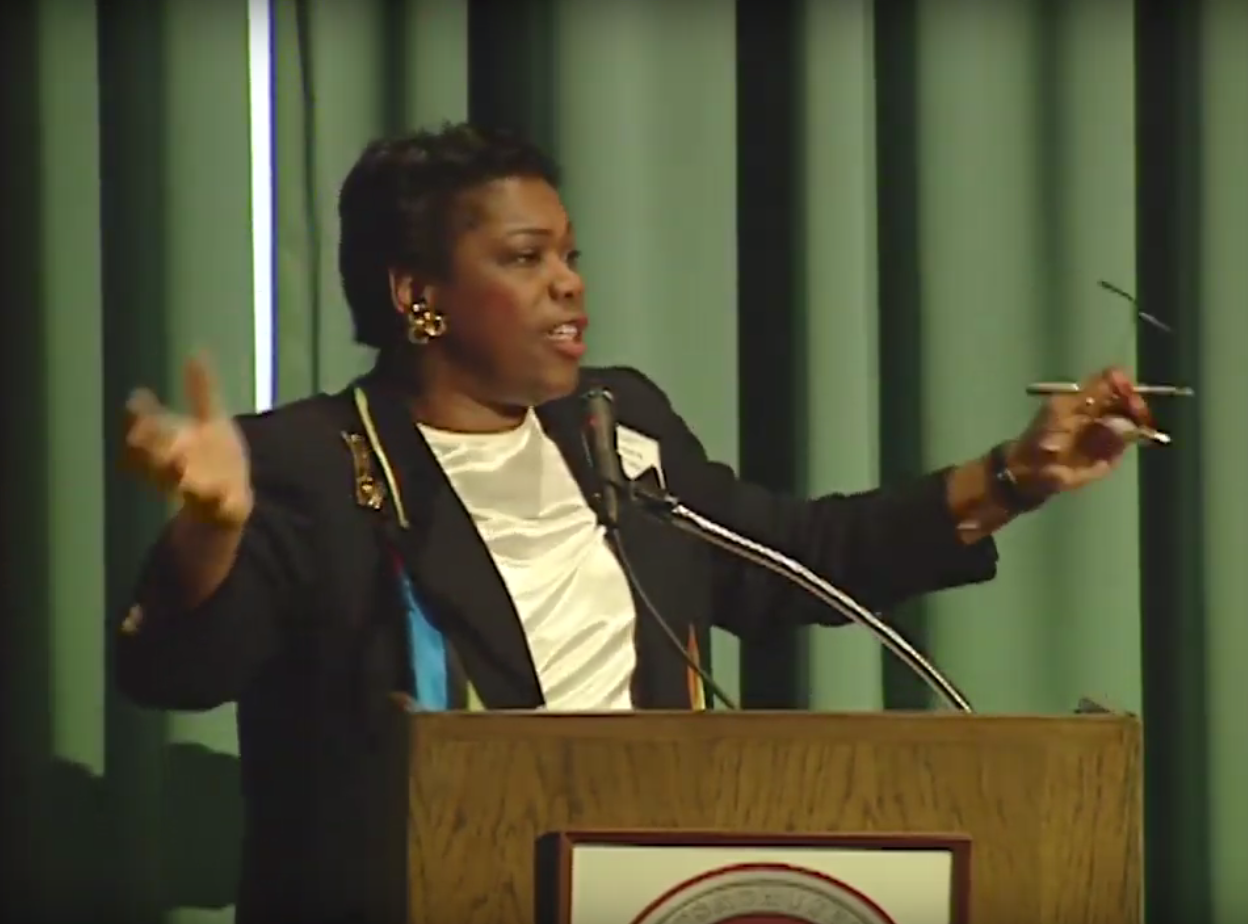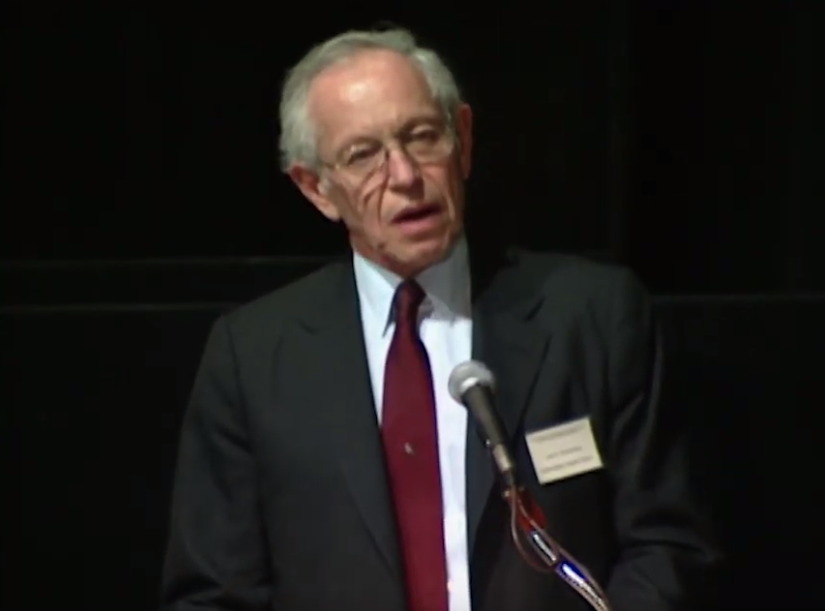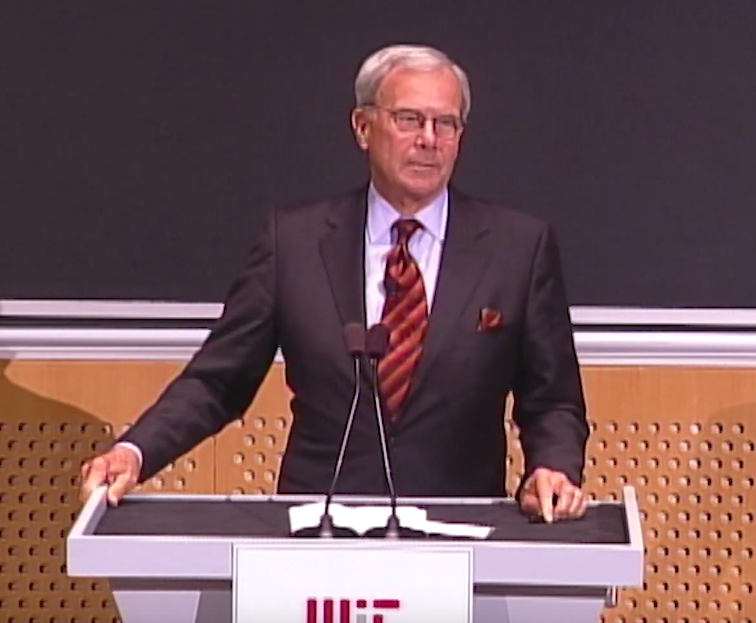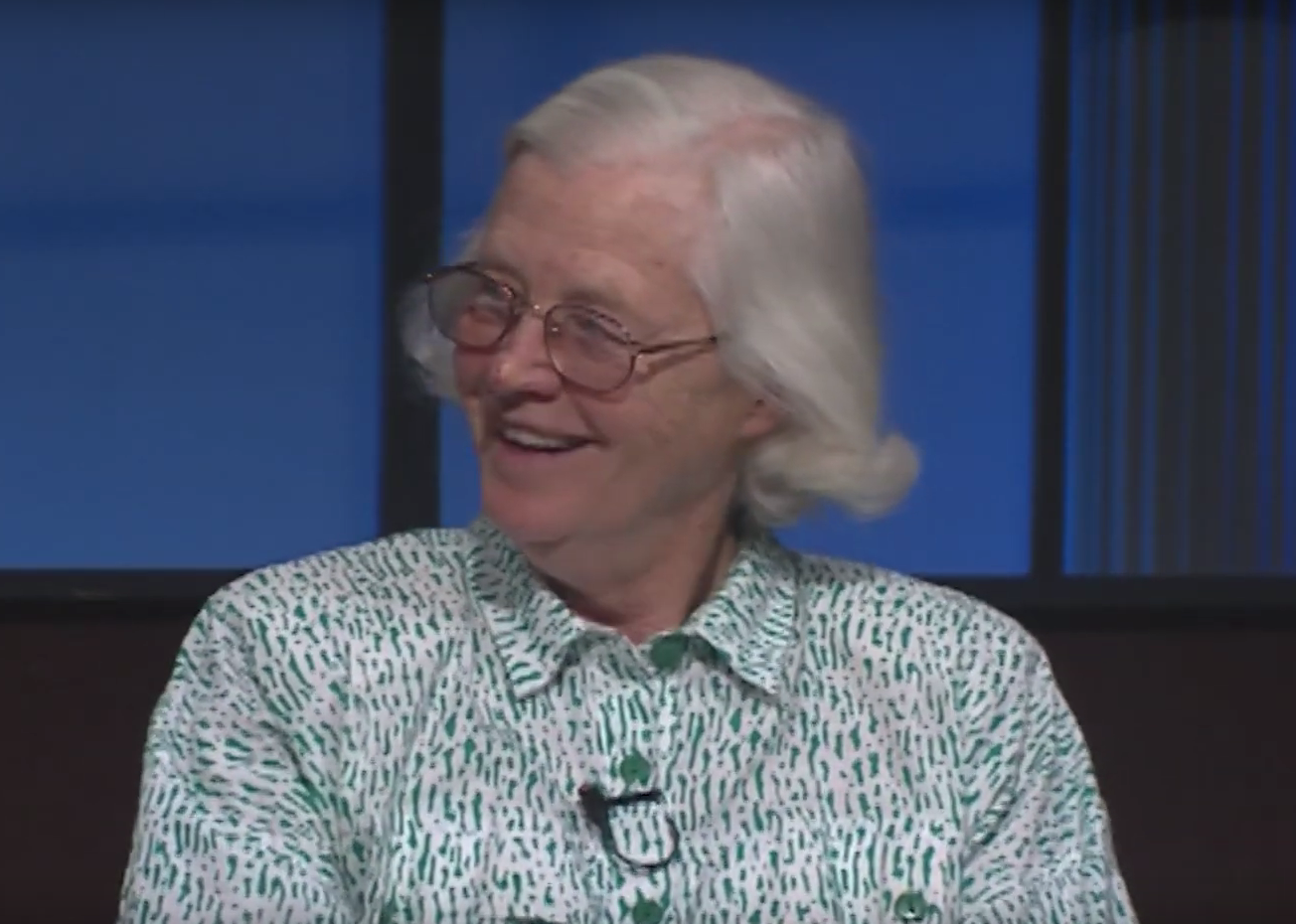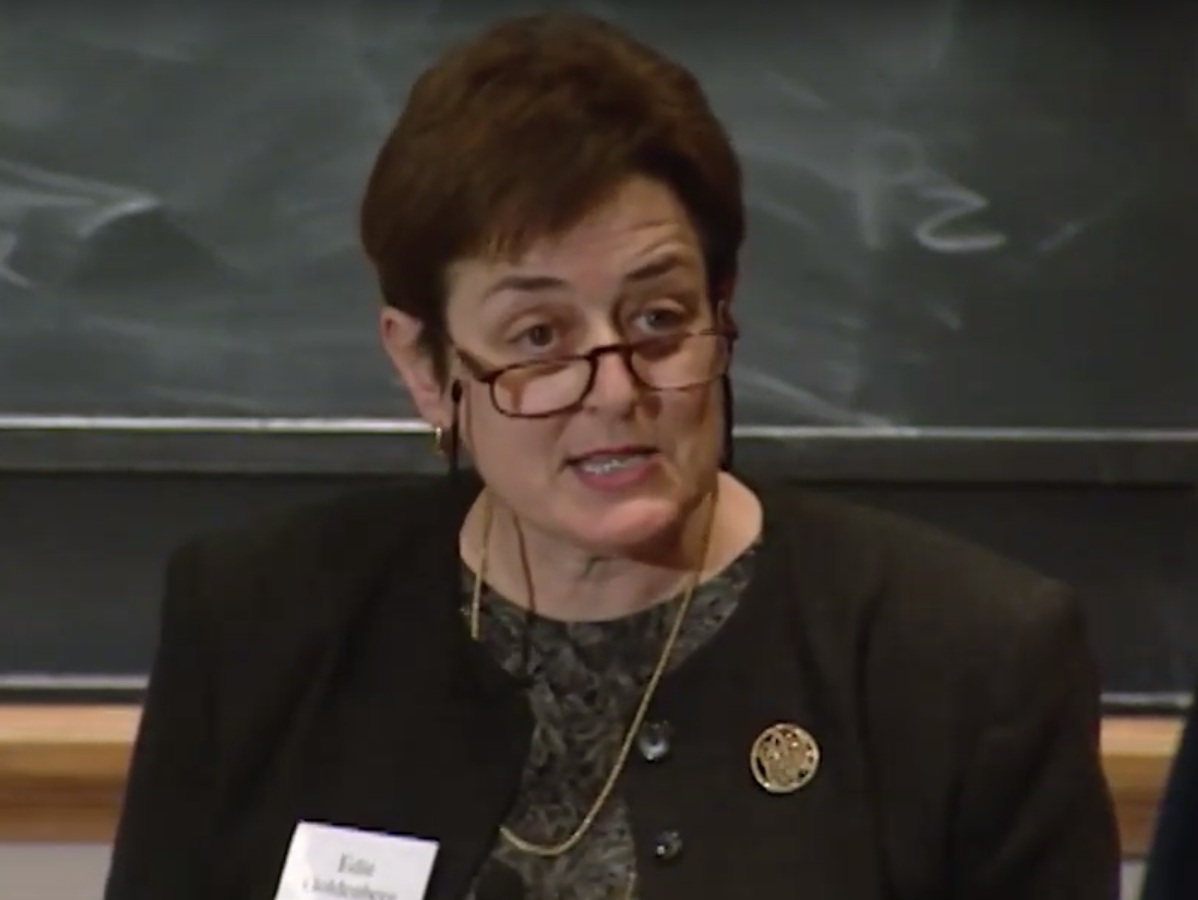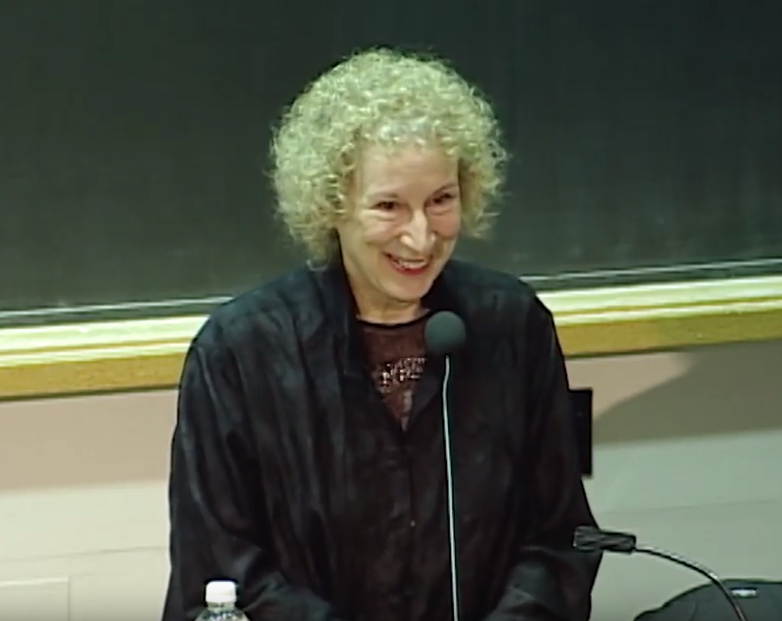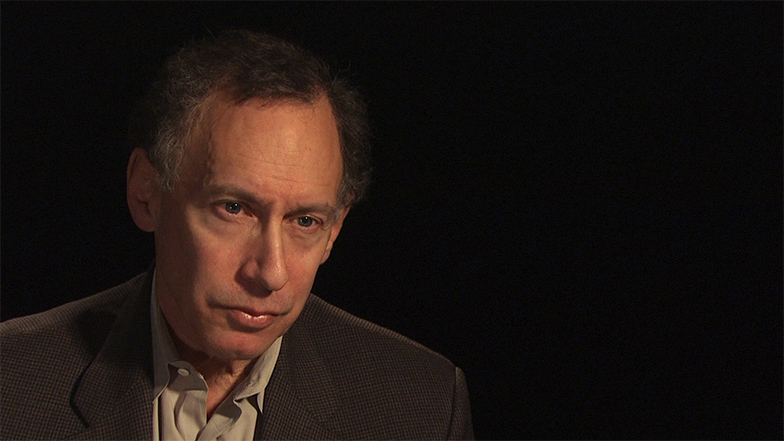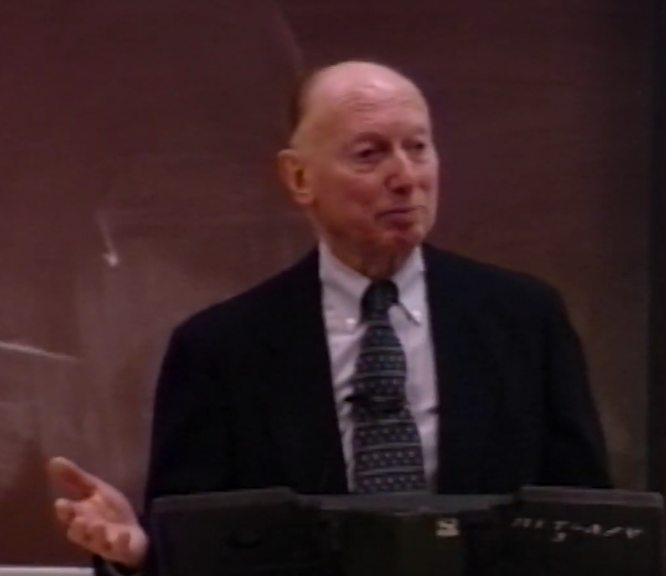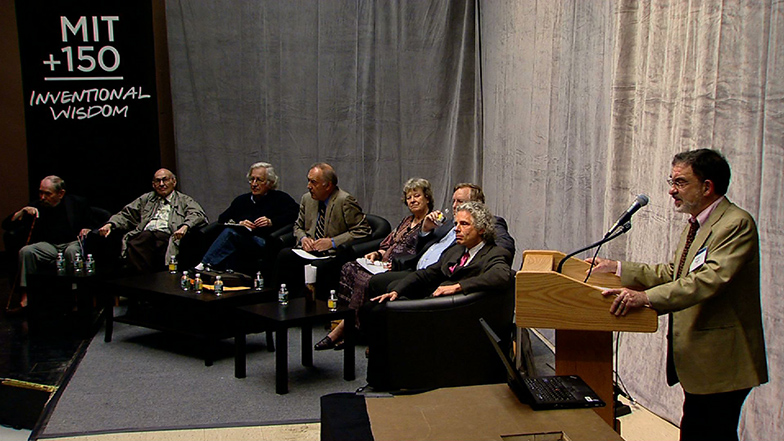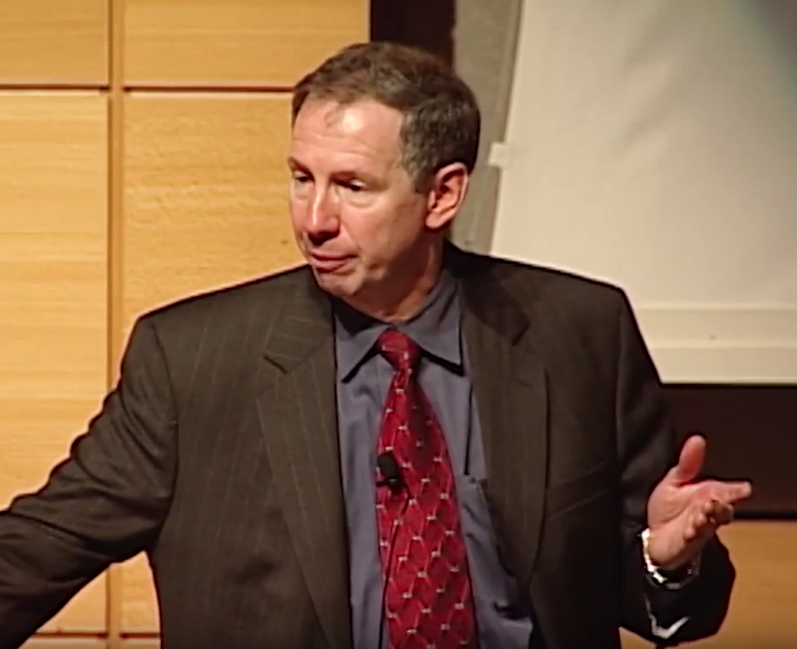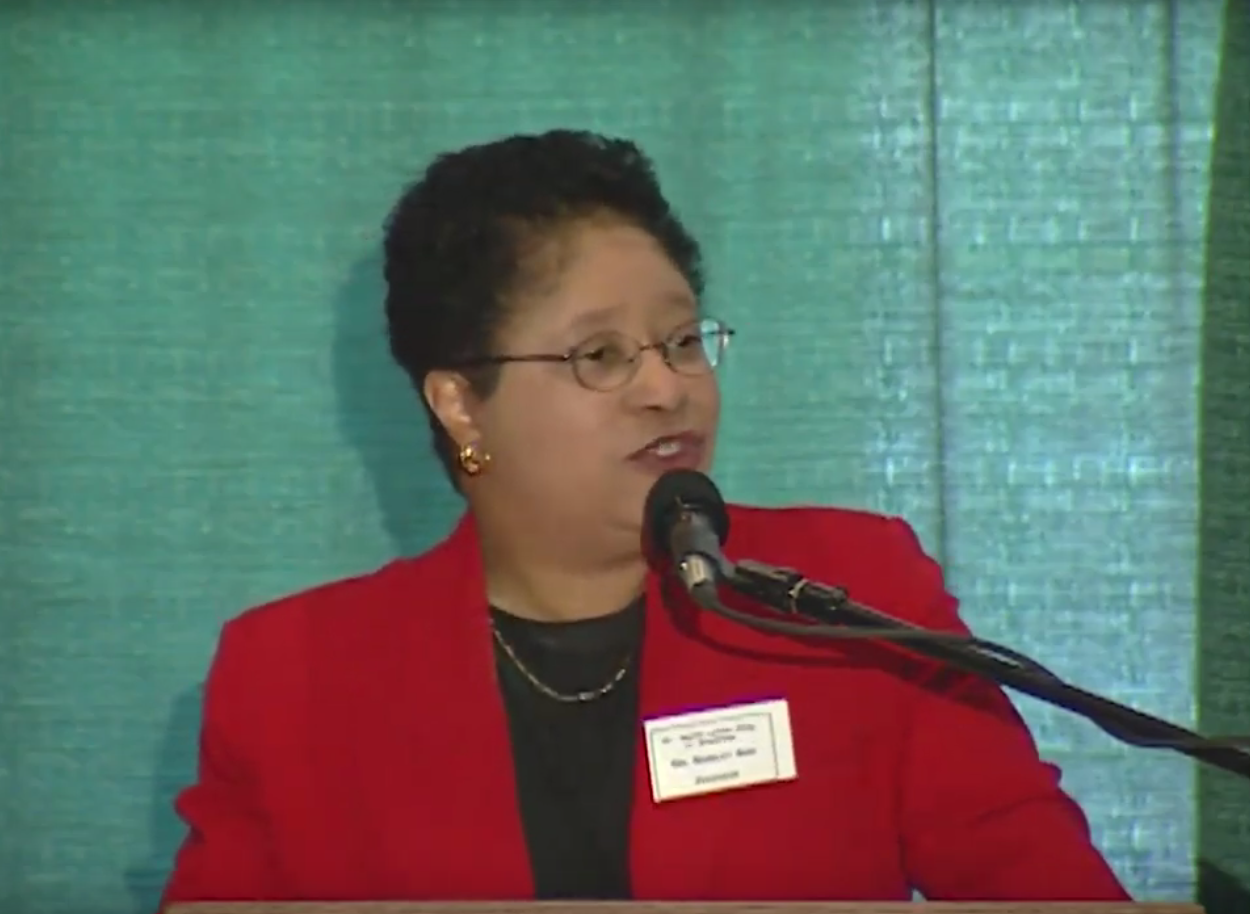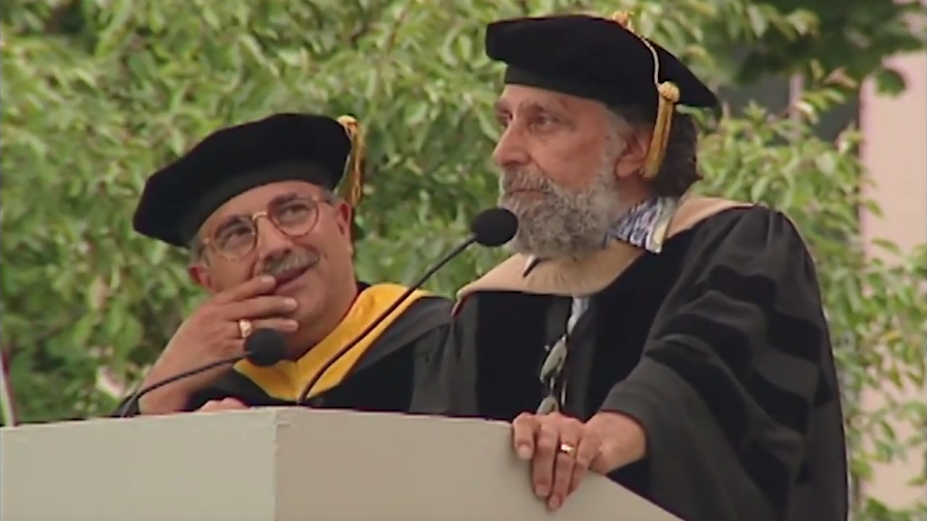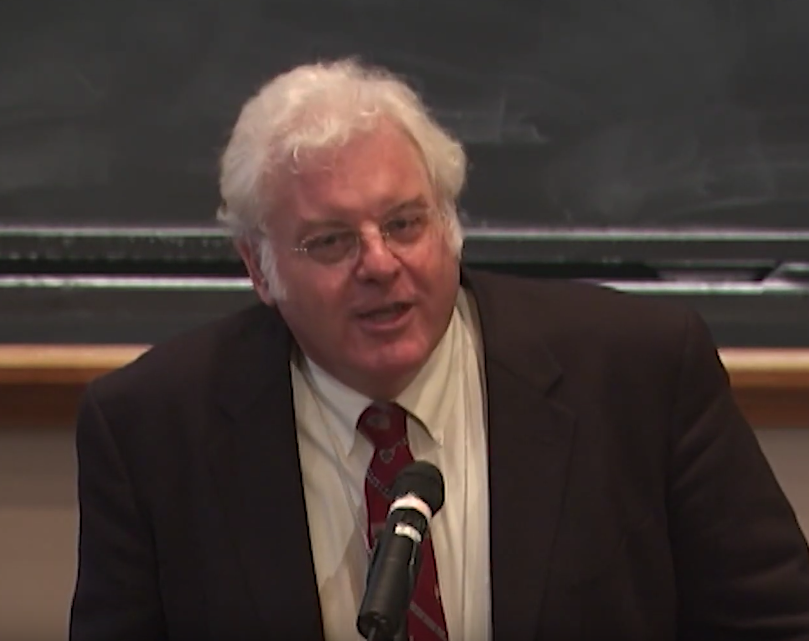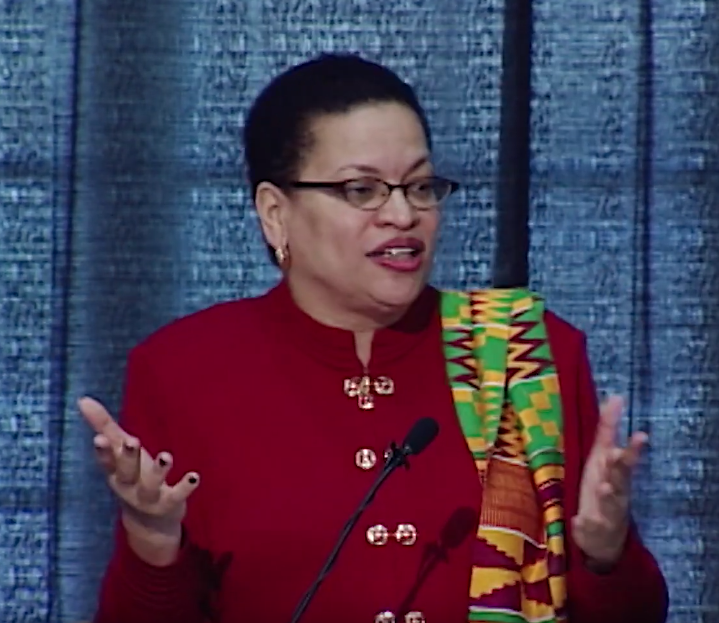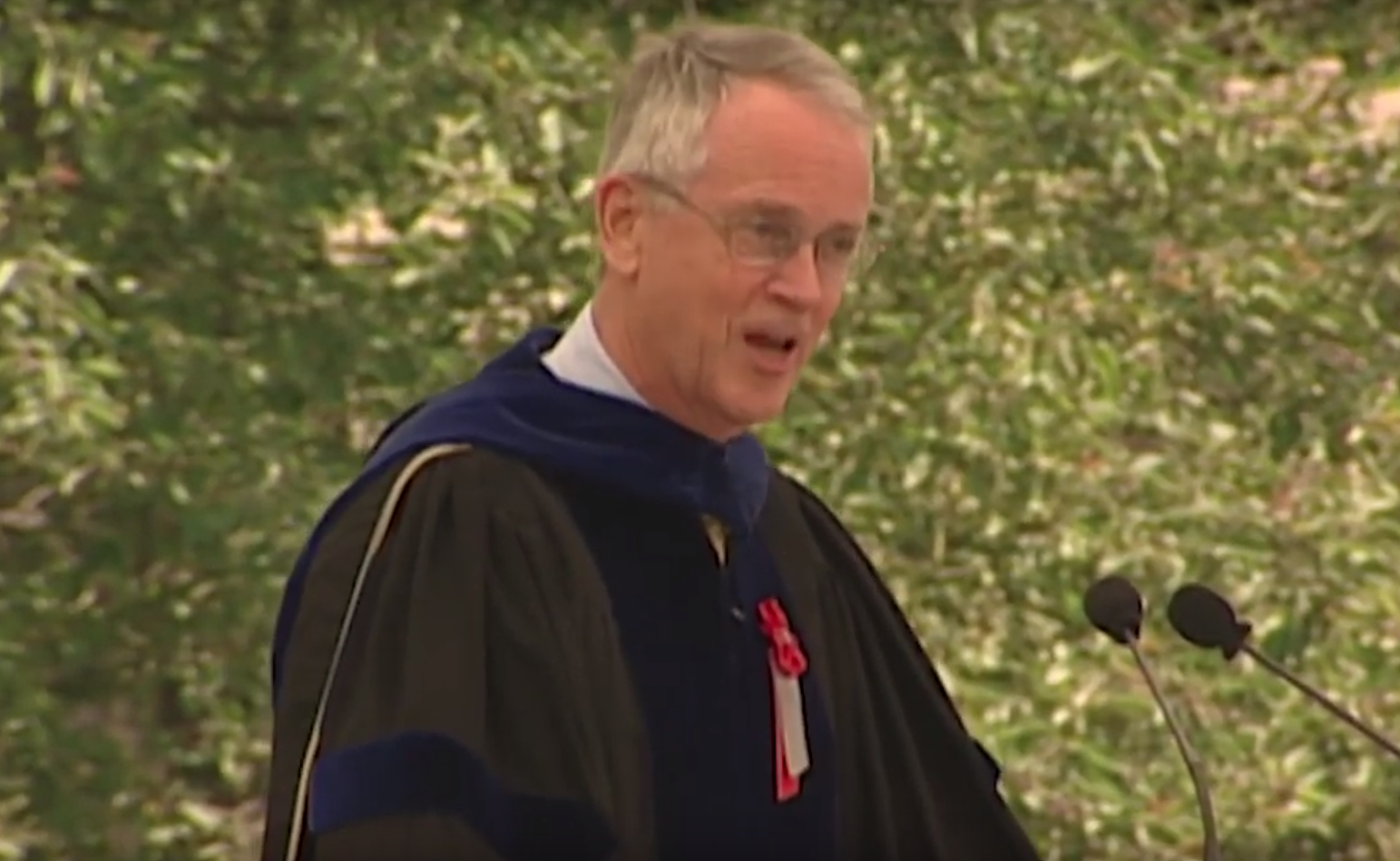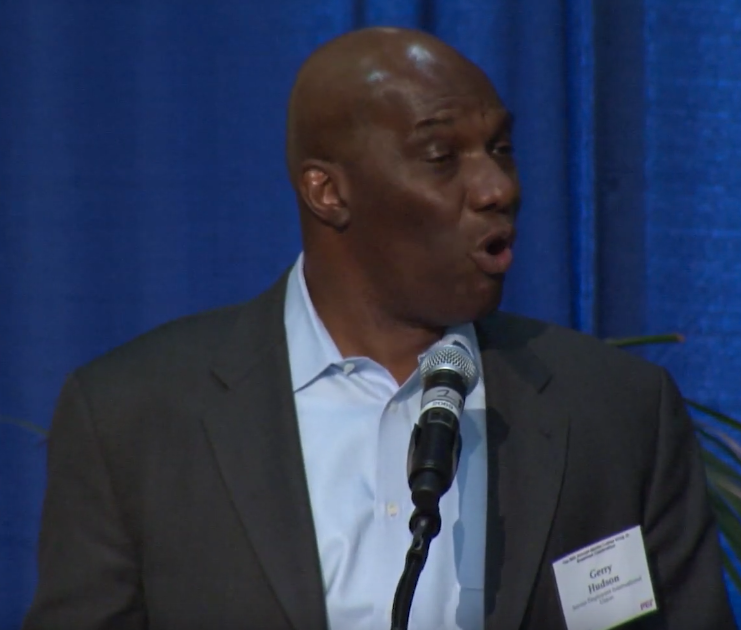Physics Open House Symposium, “The Importance of Basic Research in Physics and of MIT Science,” Session 2 (10/5/2007)
[MUSIC PLAYING]
PRESENTER: It's a real pleasure to welcome Bob Laughlin back TO MIT. Bob was an undergraduate at Berkeley, but he came to MIT to do his graduate work. His graduate thesis was done here with John Joannopoulos. He then moved on to Bell Labs for a while, Lawrence Livermore, before he finally got a faculty position, which he still has, at Stanford University.
Bob is best known for his theory of the integer quantum Hall effect, followed by his theory of the fractional quantum Hall effect, for which he shared the Nobel Prize in 1998 with the two experimenters who discovered the fractional quantum Hall effect, Horst Stormer and Dan Tsui.
Bob has traveled extensively. He has been a spokesman for science in a number of different areas. He spent two years in South Korea as the president of the Korea Advanced Institute for Science and Technology. He has recently written a popular book on the philosophy of science, a book called A Different Universe.
Not an alternate universe, a different universe, with the subtitle "Reinventing Physics from the Bottom Down." Now, I know that that's a well read book because just in the break, someone came up to me spontaneously and mentioned that Bob, he had read your book and he enjoyed it very much, so he was looking forward to what you were going to tell us. Bob.
[APPLAUSE]
Good morning, everybody. Obviously, it's a great pleasure to be back at MIT, a place where things change, but also many do not, such as numbering the buildings.
[LAUGHS]
However, that's good because then you know right where you stand. Now, when I got asked to speak for this event, I did a little thinking about the topic, because it's rather important. I tried to imagine what was the intent of the people who lobbied to get the money, the people who donated the funds to build a center, and more generally, what the vision of the center is, in the context of physics with a small p. And the title I came up with was Renaissance Physicist. That is to say, physicists who know a lot of things.
So let's talk about that a little bit, because that's pretty clearly what the center is all about. We talk about bringing together, and so forth. Why would you want to do that, however? What's to be gained by bringing together? After all, you've work pretty well apart for a long, long time. And there's an old saying about machines, of course, if it ain't broke, don't fix it.
So the question you can ask is, well, what are you fixing? And what is the objective, really, of the center? And I must alert everybody that this talk actually, by design, is directed at the younger people more than the old thuds. Because the problem I'm going to talk about is your problem, not the problem of your academic forebears.
Now, I will take off my MIT hat and put on my Stanford hat and tell you that MIT is not the only organization that is worried sick about this problem. Stanford also has gone to great lengths to try to bring the branches of physics together, in some ways more successfully than others.
My informant of physics, Professor C. N. Herring, who is now not there completely, felt the same way, that we are trying to invent physics with a small p. That's what we're trying to do as intellectuals, and we're always fighting the centrifugal forces that try to make it not happen.
He didn't succeed. And I think it's fair to say that a lot of people who have omnivorous interests haven't succeeded, either. The reason, of course, is the funding algorithm with which we interact with government, and also historical patterns. The reason we need to think hard about this problem is, of course, that the historical milieu was changing. That's exactly what Shirley was talking about when she mentioned the rather dark clouds on the horizon for science.
The division of labor in science and technology that we're familiar with is, in fact, a Cold War legacy. And like many things that our Cold War legacy is, it's going away, in part, at least I think so. In other words, that the physics departments that don't create physics with a small p won't survive. So it's very important.
Now, we might ask the question, if there had been no World War II and no Cold War, why would we have physics departments? After all, the science that really makes the heart of industrial people beat is chemistry and, of course, its doppelganger, material science.
Material sciences and engineering departments now to basically, it solves the chemistry. There's a lot that happens in materials and in organic chemistry that are kind of magical and unpredictable, and you can make lots of money selling them. And so our industrial friends are mainly concerned about that.
Also, engineering, electrical engineering, mechanical engineering, in particular, continue to be strong disciplines, despite the heavy challenges that are coming to us from the Far East. Well, there are two reasons, I think. And of course, this is something that all of us who are in physics have to think through, but I'm going to give you my personal opinion. It has to do with the topic.
In a technical milieu, which is where we are, some of the people have to know things. Some of the technical people on your staff have to just have a wild, childlike curiosity, where they demand to understand everything, everything. In other words, they need some physicists. Now, I'm saying this from long experience. There's something about the physics discipline that manages to capture the most arrogant people in the university. Yes.
[LAUGHS]
Not surprisingly, such people are not always welcome inside engineering houses. And you're laughing, but it's absolutely true. It turns out we're a very dangerous people. In industrial environment, it's the physicists who walk out the door with your technology.
They understand it, and they walk out the door and they start a company. And of course, that's very good for starting companies, but very bad for defending your own company against. That's intellectual property theft.
So the industrial value of an omnivorous person is actually problematical, and has been from the very beginning, actually, at least I think so. And that's my experience, having worked in industrial environments myself. This is true, by the way, even inside nuclear weapons laboratories. People who know lots of things are really not welcome because they're dangerous there. In that case, they're dangerous to national security.
No, our value, especially in engineering school, is actually to parents. Now, people who run universities, of course, like to hear that, because the money, the cash cow part of our business, is undergraduate education. But it's actually true.
There's a joke in physics, in science, you garner power by telling people what you know, whereas in engineering, you garner people by preventing them from knowing what you know. This is, of course, not a joke. It's actually true. Very good engineers know a lot of things that they don't tell you.
Unfortunately, that behavior is fundamentally incompatible with the entire concept of education. So in an engineering school like MIT, and other schools that have engineering sides to them, you have a fundamental conflict because between the needs of the industrial buyers, on the one hand, and the needs of the parents on the other. And those of us who are in the knowledge business are actually serving the causes of education, which is to say, the causes of parents.
This is the reason why you can't close the physics department. A lot of universities are doing just that, they're closing their physics departments. But an engineering school, like MIT, cannot close its engineering departments, because we are the Renaissance people of the technical world. It is a physicist who will tell you clearly and tersely how a thing works, and probably only a physicist.
Thus, our future is tied with clarity, with omnivorous interests, with understanding things that are other people's quasi-property. Basically, being an arrogant know-it-all. At least I think so, and that's the way I've been pushing my own departments at Stanford. And I think that's the underlying impetus of the Green Center. The younger people who will fill it have a job to do, and their job is to create intellectualism an industrial environment that is fundamentally hostile to intellectualism.
Now, I want to talk a little bit more about that hostility, because it's very important to the task ahead, both for the physics departments, generally, and for younger faculty. Tom mentioned I'd written a book. You know, I'm a physicist. I'm one of the arrogant people I've been talking about. I have many hats, and one of them turns out to be literary. You know, there's that old story, you've got lemons, you make lemonade. Well, I found I could write and it makes money, so hey.
Well, I have a new product coming out. We're in contract in New York now-- it's actually coming out in Germany first, but this is a mere detail-- called Crime of Reason. And this new book is very, very relevant to the thing we're discussing today, which is knowing things. The book is very dark. The premise is that the sequestration of knowledge that has happened during my lifetime has become so severe and has accelerated so much that it's actually now against the law to figure out certain things for yourself.
Now, physicists normally don't think about that too much, because you know, we're very arrogant people. We think we have a right to understand everything. But if you think about it a minute, there are some kinds of physics that are obviously very, very important that you never talk about. You don't think about the computer codes to calculate that thing don't exist.
Well, when you get inside the fence of a weapons laboratory, you'll understand why. Those particular things were identified as highly dangerous knowledge in 1954, and expressly banned from the public domain by the Atomic Energy Act of 1954. Now, I can't tell you what those things are, because telling you what's banned is itself a violation of the Atomic Energy Act of 1954. But you're very, very smart people so you can figure it out for yourself. Just ask yourself, where are the holes? OK, where are the things you don't talk about, and there you are.
Now, it is part of the cultural transition that happened when the nuclear weapon was invented, that our society-- well, let's say generally. Western society, generally, decided that there were certain kinds of scientific knowledge that were simply too dangerous to be widely known and you had to get rid of them. And you had to prevent people, financially, from figuring them out. You had to cut off their grants. Basically, stop research in those particular areas.
Now, who decides where those places are? Well, of course, that's the problem. In the case of nuclear technology, the really dangerous things that were banned, of course, were well identified at the time because the technology was already mature. But other things that came later, it's less clear, less clear.
There are big hunks of semiconductor technology which are completely off limits. There are big hunks of laser technology that are completely off limits. Now, these are not banned by the Atomic Energy Act, so I'm not violating any laws by talking about them.
So that means that in physics, as a practical matter, the idea of physicists, people who know everything, is in conflict, fundamentally, not only with trends historically, but the law, the law. It's actually against the law to think about things. There is a famous case.
There's a number of them. Probably the most famous is the Morland hydrogen bomb case, where a journalist named Howard Morland published a piece about guesses about how hydrogen bonds work that the FBI stopped, or attempted to stop, but actually didn't succeed in doing so.
And the judge in the case basically affirmed the idea that the safety of the public against certain kinds of technology overrode, manifestly overrode, the right to speech, and moreover, the right to even think about it. Now, you might ask, isn't that a civil rights issue? And indeed, it is. It's a civil rights issue that has never played out in the court for a reason.
You can guess, let's say, from the Wen Ho Lee case that those kinds of things might, if brought to court, strike down the Atomic Energy Act, and the people whose job it is to protect security really don't want that. So as a practical matter, what's happened, let's say, since 1950 is that the potential confrontations of intellectual freedom on the one hand and national security on the other have been avoided.
Attorney General John Ashcroft made a statement, quite amazing. He said that in the entire 50 years, the criminal provisions of the Atomic Energy Act had only been prosecuted in court twice. Now, let's say the non-espionage ones, and let us guess that it is not feasible that there were only two violations. So it's not too hard to guess that the atomic energy probably is in fundamental conflict with the first Amendment.
Now, that's a matter that's played out in physics, but of course, not completely because it's repeating itself now in biology. And those of you who have biology interests know that there is disappearing knowledge in the case of biology also right now, although it's not forbidden by statute.
It's actually disappearing by virtue of the funding algorithm. It's just you can't get money to do certain things. Word on the street is it's very hard to get bacteria money. So the people who pay for biological research are happy for you to work on eukaryotes, not so happy to work on organisms that might be highly, highly dangerous.
Now, there's also the little matter of private property, and as you know, we've had madly accelerating-- well, let's say strengthening-- strengthening of intellectual property laws in the past 15 years, basically, as defense against IP transfer across the Pacific. And that means that the most amazing things are becoming patented.
For example, Microsoft has patented the verb. I'm not making this up. And Cingular has patented the smiley. Amazon.com has patented the entire idea of the checkout basket on your computer. Could we patent Maxwell's equations today? I think so. I think you could. You could make it illegal. You can make it against the basic copyright violation to have that shirt right there. Right?
[LAUGHS]
It doesn't matter if God said it. The Supreme Court says no. Well, so is this historical trend correlated with the stress we've all been feeling in physics, as it gets harder and harder to raise money to make things clear? OK. Well, that's a matter of debate, but my own personal opinion is yes.
I think they are different sides of the same coin, and that the era that we're in right now, and still in, is an era of darkness, in which the entire idea of public domain knowledge is being rejected by people very high up in our society, and implemented in the laws.
Now, what will happen in the future? Of course, it hasn't played out yet. And I guess that's kind of what's on my mind here. I think of myself as a physicist, I think of myself as a rather revolutionary person. Of course, the physicists that we revere are all fairly revolutionary people, but revolutionary in the sense of something a little deeper and more important and more global.
And that is physics departments are the place, in a technical university, where the entire Western concept of the light of knowledge is safe, because physicists cannot live without understanding things. It is hateful to a physicist to let something remain ununderstood. And that means that physicists are tailor-made to be trouble makers when it comes to the sequestration of knowledge.
Now, whether that will make our society safer and more healthy in the long run or more dangerous in the long run, I don't know. But I do know that that's the mission. As the cloud of darkness descends over technical knowledge in the world, it's our job, as a discipline of science and a discipline of engineering, also, to make sure it doesn't go out. In other words, our job is to make sure that the concept of reason, the science of reason, does not perish from the earth.
So you younger people who are populating that center up there, I'm sure you'll mostly go around about your business as usual, because that's what they do. But please, please keep in mind that the clock is ticking. We have a number of more difficult years to go through, in my opinion, and there will be incredible pressures on people to specialize and not explain things to each other. Because that's what people afraid of knowledge want. That's how you manage a corporation, how you keep your engineering safe, is you make sure people don't talk to each other.
So I think what you have to do is create something new, something that everybody else in technical life and universities is trying to create also, but unfortunately, we don't have a nice, big center in which to do it. Therefore, the donors and the management team of the university have given you the tool to do something really great and important historically. The rest is up to you. Godspeed.
[APPLAUSE]
PRESENTER: So our next speaker, Steve Weinberg, I think, is truly a Renaissance physicist. He is the Josey Regental professor of physics at the University of Texas Austin, and his imprint can be found everywhere in modern and reductivist physics, in particle physics, in astrophysics, and in cosmology. More and more, as time goes on, he has emerged as a spokesman for secular human values and high culture in a world that's been swept by darker forces.
Steve was a visiting professor here, and then professor of physics at MIT from 1967 to 1973. This was a period of profound change in elementary particle physics, and he played a central role, and in many aspects, the central role in that revolution. We'd like to think that on one of the slate blackboards still hanging in the CTP, perhaps in some graduate student's office now, in 1967, Steve first wrote down the equations that have come to be known as the standard model of particle physics. We often invoke this idea when the construction team was threatening to throw away some of the blackboard, because we didn't know which one it was. We made sure of that.
[LAUGHS]
And therefore, they all had to be preserved and reused in student and faculty offices. Steve's paper in 1967, "A Model of Hadrons," marks the birth of-- excuse me. It says leptons there, too, "Model of Leptons." If only with then we had a model of hadrons-- marks the birth of the modern era in particle physics, and was the first unification of forces since Faraday and Maxwell unified electricity and magnetism in the 19th century. It led to a Nobel Prize that he shared with Abdus Salam and Shelley Glashow in 1979.
Last week, I was at a meeting concerning Islamic physics, in which Abdus Salam was mentioned. He is, without doubt, the leading Pakistani physicist in history. He is also not honored in his country because he was a member of a minority sect in the Muslim world. And when he was being discussed, the person who was talking about him said that he was the recipient of one of the really big Nobel prizes of the 20th century.
[LAUGHS]
Steve's contributions to physics are really far too numerous to mention here, so I'm just going to mention one is an icon. In 1988, he wrote a paper, in which he made a prediction of the dark energy density in the universe based on anthropic arguments. In recent years, observations of the cosmic microwave background radiation have proved that prediction correct. 70% of the universe is in this mysterious form of dark energy.
Now, this is, as far as I know, the only successful prediction that's been made on the basis of anthropic logic, but also, it ranks second in scope only to Alan Guth in the scope of his predictions. He predicted the identity of 70% of the energy in the universe, and of course, Alan, through inflation, predicted the total energy in the universe. So pretty good, Steve.
[LAUGHS]
More recently, Steve has been playing in the big leagues of culture wars that have swept the academic and political world over the past years. In fact, if you go online, you can read of many books, and you can read many book reviews, interviews, and opinion pieces that Steve has written, and they are wonderful fonts of both wisdom and human sympathy. I'll just quote briefly from one. Steve was reviewing a book that had been written several years ago by Stephen Wolfram, introducing a new paradigm for modern science.
It's about 700 pages and 20 pounds. And Steve wrote quite a restrained review, a polite and restrained review. At the end, Wolfram was advocating-- Wolfram's a computer scientist-- and Wolfram was advocating that the universe should be viewed as a giant computer. And Steve closes his review by saying, so might a carpenter, looking at the moon, suppose that it is made of wood? And so with that, let me introduce Steve Weinberg to you.
[APPLAUSE]
Thank you very much, Bob. As others have said, it's wonderful to be back. Thanks for having me here. In thinking over this talk, I was flooded by happy memories of my time here. And so I'm going to burden you, in at least the first part of my talk, with a number of personal reminiscences, and at the same time keep you from your lunch.
A century ago, when I decided to become a theoretical physicist, I felt, to some extent, that I was taking the veil. I loved physics, but at the same time, I was attracted to public affairs, with the opportunity to do some good in the real world. And I regretted giving that up. I knew, of course, of physicists who had been very active in the real world.
In World War II, Oppenheimer and Robbie, for example, in the United States, Lindemann and RV Jones in Britain. But it seemed to me that those who had remained influential after the war did so at some cost to their own research. I didn't want to pay that price. And I didn't think I'd be very good, anyway, as an insider dealing with government officials.
At MIT, I learned that there was a different mode of being active in public affairs, that it was possible to work as an outsider giving technical advice to the public, and in some cases to Congress, rather than as an insider advising government officials. I'm going to mention two examples of this, both of them centered here at MIT.
The first is the missile defense debate. In March 1979, President Nixon announced that the US was going to deploy a massive new antiballistic missile system called the Safeguard system at 12 sites in America, which would have given, at least nominally, complete coverage of the continental United States.
Senator Edward Kennedy asked Jerry Wiesner, who was then provost of MIT, and Abram Chayes from the local law school up the river, to prepare a book that would provide technical advice for the public and for Congress assessing this proposal, judging its wisdom. And Jerry Wiesner asked me to help, in a small way, with preparing the book, along with A. Chayes.
I jumped at the chance. I had done a little work on missile defense as a member of the JASON group of consultants. And like many other people, I had come to feel that this was a terrible idea, both because it would be largely ineffective, and to the extent that it seemed effective to the Soviets, it would only lead them to increase the number of missiles aimed at us and/or to increase their likeliness to use them in a crisis.
We asked a number of other people to contribute to this, some at MIT, Bernie Feld, JCR Licklider-- I never found out what those initials were for-- and George Rathjens. And it's characteristic of MIT that the boundaries between different departments, it seems to me, are more permeable here than in any other university I've been at.
Wiesner was, of course, an electrical engineer. I think Licklider was probably and electrical engineering, and these days, he would be in computer sciences. Bernie Feld was in the physics department. George Rathjens was in the Center for International Studies. And we also got some support from people outside MIT, Hans Bethe, Carl Kazen, Bill Moyers, and Arthur Goldberg.
In the end, the Safeguard system was not deployed. I don't think it was very much because of our book. By the way, our book came out with a really snappy title. It was ABM, An Evaluation of the Decision to Deploy an Antiballistic Missile System, and then it was translated into German with the title Rakete Krieg.
[LAUGHS]
Rocket Wars. While the system was not deployed, I don't think it was because of our book but because, to the surprise of everyone, both pro- and anti-ABM. People who lived in the suburbs in America, where the missile sites were going to be located, decided they didn't want anti-missile missiles in their neighborhood. And that killed it much more effectively than any learned arguments that we were able to provide.
The other example, it came out of the student unrest in the 1968-69 academic year. Partly as a response to that unrest, in December 1968, about 50 faculty members, including from the physics department-- Viki Weisskopf, Herman Feshbach, Francis Lowe, Kurt Gottfried, and me-- prepared a statement.
And we called for, and I quote, "Scientists and engineers at MIT, and throughout the country, to unite for concerted action and leadership, to initiate a critical and continued examination of governmental policy in areas where science and technology are of actual or potential significance."
And in a way that I don't think would have been possible at any other university, this actually crystallized into an organization, the Union of Concerned Scientists, which survives to the present. Herman Feshbach and Francis Lowe were briefly the first and second chairmen, and then Henry Kendall took over for a number of years.
Henry's main interest, at least at first, was in the dangers of nuclear power, but the scope of the USC-- I'll use that abbreviation-- expanded to include the national defense policy, science policy, and it expanded further under Kurt Gottfried's chairmanship-- he became chairman in 1999-- and includes things like just the issue that was raised in a question to Shirley Jackson, the issue of the response of government to the voice of science.
The Union of Concerned Scientists is highly effective. I think it is probably the most effective voice of science on public issues in America, although there are others. Its statements, its reports, are competent. It only comments on issues that are within its scope of expertise. So it doesn't make statements about the war in Iraq, or things like that.
Their statements are honest. It doesn't shade its conclusions for a pre-determined aim, and it's non-partisan. We need more organizations like the Union of Concerned Scientists to deal with other issues, other public issues, on which the public and Congress need expert advice. And I'm just going to mention two of them, which are close to my heart, but I'm sure you can think of others.
One of them is space policy. Since its founding, NASA has emphasized putting people into space, rather than having people or unmanned vehicles do science in space. And this is not a good way to do science. There's not much that people can do in space that can't be done better and much cheaper by unmanned robots or satellites. People radiate heat. They bump into things, and they're very expensive. They need food, air, and water. And unlike robots, people want to come back.
[LAUGHS]
Which is a real complication.
Now, NASA has sponsored great astronomy. The things sponsored by NASA are partly responsible for making this-- it's almost a cliché now to say it's a golden age for cosmology, but all from unmanned vehicles. The Hubble Space Telescope, the Wilkinson Microwave Anisotropy Probe, and so on. And the area of planetary physics, the unmanned rovers crawling around Mars.
Astronomers and astrophysicists have generally been unwilling to criticize NASA because of its, what I regard, as an infantile emphasis on manned spaceflight. Because they have felt, as, obviously, NASA officials feel, that putting people into space appeals to the public, and thereby increases NASA's budget. And some of the money from that budget goes into real science.
But this tacit bargain, I think, is now unraveling. The moon/Mars Mission, announced by President Bush, is enormously costly. Not only hundreds of billions of dollars, I think close to a trillion dollars. You know, a trillion here, a trillion there, it adds up.
[LAUGHS]
And NASA is, in response, cutting back on science. And you see this in many areas, from the study of climate change, both by satellites and by observing stations here on earth, and all the way to the study of the cosmic microwave background. There are many proposals, which NASA solicited, and which it was going to go ahead with under the Beyond Einstein program, which are simply going to be deferred, or perhaps canceled.
A good example of this relates directly to MIT. Sam Ting of MIT has developed a cosmic ray observatory called AMS. I think that stands for Advanced Magnetic Spectrograph. I'm not sure what the A stands for. What is it?
AUDIENCE: Alpha.
Alpha Magnetic Sp-- oh, I would never have thought of that. Over a billion dollars has already been spent on constructing this, and it is constructed, not by NASA, but mostly by European collaboration. NASA had agreed to take this instrument up to the International Space Station. If that were done, it would be possible to observe primary cosmic rays of high energy directly, rather than just by observing the showers that we can see at ground level. And it would be the only significant science ever done at the International Space Station.
The reason for taking it up to the International Space Station is not that you need human beings there. It is not a counterexample to what I said earlier. It's just that the International Space Station is there above the Earth's atmosphere. It's got a lot of solar power, so you might as well use it for something useful for once. But NASA has announced, shortly after the president's announcement of his vision, that the International Space Station, from now on, would be only used for purposes furthering the president's vision of the moon and Mars mission.
And it is, apparently, unwilling to commit what is needed, which is essentially one quarter of one shuttle load, to bring the AMS up to the International Space Station. I think this example shows that it's time to form an organization for space policy like the Union of Concerned Scientists. And astronomers and astrophysicists and physicists should begin to speak up and challenge NASA on these childish judgments it makes.
The other example is much further from my own interests-- and I speak with some hesitation, but I have checked what I've said with experts. It has to do with economics. Economics, of course, involves value judgments, not just expertise, and the value judgments are things from the public, in general, to make. But there are some technical matters on which economists generally agree, but which get terribly muddied in arguments over policy. And I will just give one example.
There are many things that need to be done in our country that are not being done because there aren't any funds for them. Not because we can't think of how to do them, but because there just isn't money for them. One is to inspect and fix bridges and tunnels throughout the country, inspect imports for everything from nuclear weapons in freight containers to lead paint on toys, monitor prescription drugs after the FDA has approved them in the years following when they go on being used, Break the logjam in the United States Patent Office, Provide drug rehabilitation for drug addicts who ask for it.
Just amazing to me that we have this enormous criminal justice system which punishes drug addicts and we don't provide rehabilitation for people who want to be cured of their addiction. Have something like the World War II GI Bill, which provides educational benefits of the sort awarded after World War II to all our veterans, both so that people would be more willing to serve, and also so that after their service, we will have a more educated workforce.
Sometimes it's hard to argue for scientific projects which cost millions, or tens, or hundreds of millions of dollars, when there were all these other needs which are not being funded. We need all of those, including the scientific projects. Many people will agree with most of the items on this list, but it's often said that although these things are worthwhile, we can't do them because we need to cut taxes in order to stimulate the economy. Or we can't raise taxes, because that would hurt the economy, and the economy is the thing which allows everything else to be done.
Now, I've spoken to a number of economists, including one distinguished one from MIT, and I'm told that this is a fallacy, and it's sort of obviously a fallacy. In the short run, a dollar that is spent by government has precisely the same effect on the economy as a dollar which is freed by tax cuts to be spent in the private economy. The only difference is whether you get public goods or private goods for the dollar.
But as far as the effect on the economy, it's the same. I'm comparing a dollar tax cut with a dollar spent by government because they have identical effects on the deficit. And I'm claiming, and I'm told, they have identical effects on, say, employment, or other indices of the economy. Actually, I was told that a dollar spent by government is slightly more effective because a dollar tax cut, some fraction of it, would be saved. But the difference is very small.
Now, of course, the choice between public goods and private goods is a choice for voters. It's not a choice for professional economists, much less for physicists. But it is a choice that should be made without the illusion that there is something about the private economy which is uniquely healthy in a way that the public sector is not. And I think it is time, on such issues, for the public and Congress to get better advice from the economic profession. Perhaps it's time for a Union of Concerned Economists.
Well, as I said, it is wonderful to be back here, but for me, it's also sad, because so many of the people that I knew here at MIT in the late '60s and early '70s are now gone. Certainly too many to list, but I want to mention three who were important to me and for whom, posthumously, I'd like to say thanks.
One is Dave Frisch, who, when visiting Copenhagen, where I was a first-year graduate student, gave me my first research problem. Another is Viki Weisskopf, who brought me to MIT. And the third is Francis Lowe, who was a never-ending source of wisdom on physics and much else. Francis and Natalie were enormously friendly to my wife Louise and to me, and we love them.
I was very sorry that I was in Europe at the time of the memorial for Francis Lowe, and one of the reasons I was glad to be able to come here today is that it would give me a chance to make up for that and to say how much I miss him and Natalie, as well as Vicki and Dave.
But life goes on, and I see there is a new generation of brilliant theorists here at MIT. I had dinner last night with a number of them and thoroughly enjoyed that. And now, they have a wonderful new center in which to do their work. And I congratulate them for the opportunity of working here. And thank you and wish you, for lunch, bon appétit.
[APPLAUSE]
PRESENTER: We do have time for questions or comments, if anyone wishes to say something.
AUDIENCE: I have a question for Bob Laughlin. Bob, you kept talking about physics with a small p. And I was wondering, what is physics with a large p? What is the distinction?
LAUGHLIN: Roman, that's just jargon that I thought everybody knew what I meant. Just in case it didn't, physics with a big P at Stanford has to do with departmental warfare, OK?
[LAUGHS]
AUDIENCE: See, we don't have that here so we didn't understand.
LAUGHLIN: Yeah, right.
[LAUGHS]
Let me tell you-- since I've got the microphone, I get to tell you a joke now. One of my best students ever is John Bakalson Soffi, who's now in the area now running a biotech company. And he said, you know, I've got Stanford figured out. He said, at Stanford, we have two physics departments. We have the Department of Physics-- sorry, we have the Department of Applied Physics and we have the Department of Unapplied Physics.
[LAUGHS]
OK. Now that's what I mean by physics with a large P.
PRESENTER: I can add to this, that a long time ago, when I was thinking about taking a job at Princeton, Murph Goldberger described Princeton physics to me by saying, at Princeton, we do physics with a capital F.
[LAUGHS]
Max.
AUDIENCE: I have another question for Bob Laughlin. We've heard a number of slightly gloomy and cautionary remarks throughout the morning here. And I was wondering, on the topic of knowledge sequestration, whether you feel that there is also a glimmer of hope coming from the internet and the globalization of information, where it becomes harder and harder, even for an entire nation, to stifle information that can become accessible from somewhere else?
LAUGHLIN: This is not the time to have a discussion on that because we're talking about the Green Center, but since you asked the question, just very tersely, no. The internet has an economics problem, and the problem is that the communication is free. And you notice what's happening with it, it's filling up with garbage.
And what is the end point of that, I'm reasonably sure, is another version of television, in which there's tons of information on the internet, but no knowledge. Actually, when it comes to industrial things, lawyers have teams of people preventing the knowledge from being accessible on the internet. If you put it on the internet, they'll sue you. And of course, there's disinformation as well.
So no, I don't think the internet is the revolution that everybody thought it was. And then I reiterate that in this rapidly changing time, you can't evade the responsibility, as a physicist, to be the Renaissance person that the engineering university needs. It's very, very important.
AUDIENCE: [INAUDIBLE] open source for space probe. There's another project that's going on in the Department department of Ed. You know, you and I witnessed the transformation from the AC gives you permission to be unique, and that's united organization.
In other related administration, that we've been [INAUDIBLE]. There would be a $15 billion wealth for which there is no scientific reason, really. And this is very similar to the space station.
PRESENTER: Steve, you want to say something? Let me just add to that, Bruno, that one of the most enlightened things that the Department of Energy has done for the last 60 years is continuously support theoretical fundamental physics at MIT.
[LAUGHS]
[APPLAUSE]
LAUGHLIN: Look, I have mixed feelings about the Department of Energy, like everybody else, but let me make a prediction since I'm going to put on my Livermore hat now. Of all the many faults that Livermore has, the big laser is not one of them. I think what's going to happen soon is that they're going to make a pellet go off.
When that happens, it will change the world. There will be banner headlines in the New York Times, and suddenly, people's thinking about the physics and its relevance to the energy future will have a 180 degree shift. Now, of course, I'm a theorist, so I make concrete predictions. So either that happens or it doesn't. I'm willing to take bets.
[LAUGHS]
AUDIENCE: I think we can discuss privately.
LAUGHLIN: OK.
[LAUGHS]
PRESENTER: Other questions or comments? Well, if not, let me thank everybody, the organizers and the speakers. And everyone enjoy lunch, and there's a dedication ceremony at 2:30 in the atrium on top of the Sol Lewitt Art. Thank you.
[APPLAUSE]
